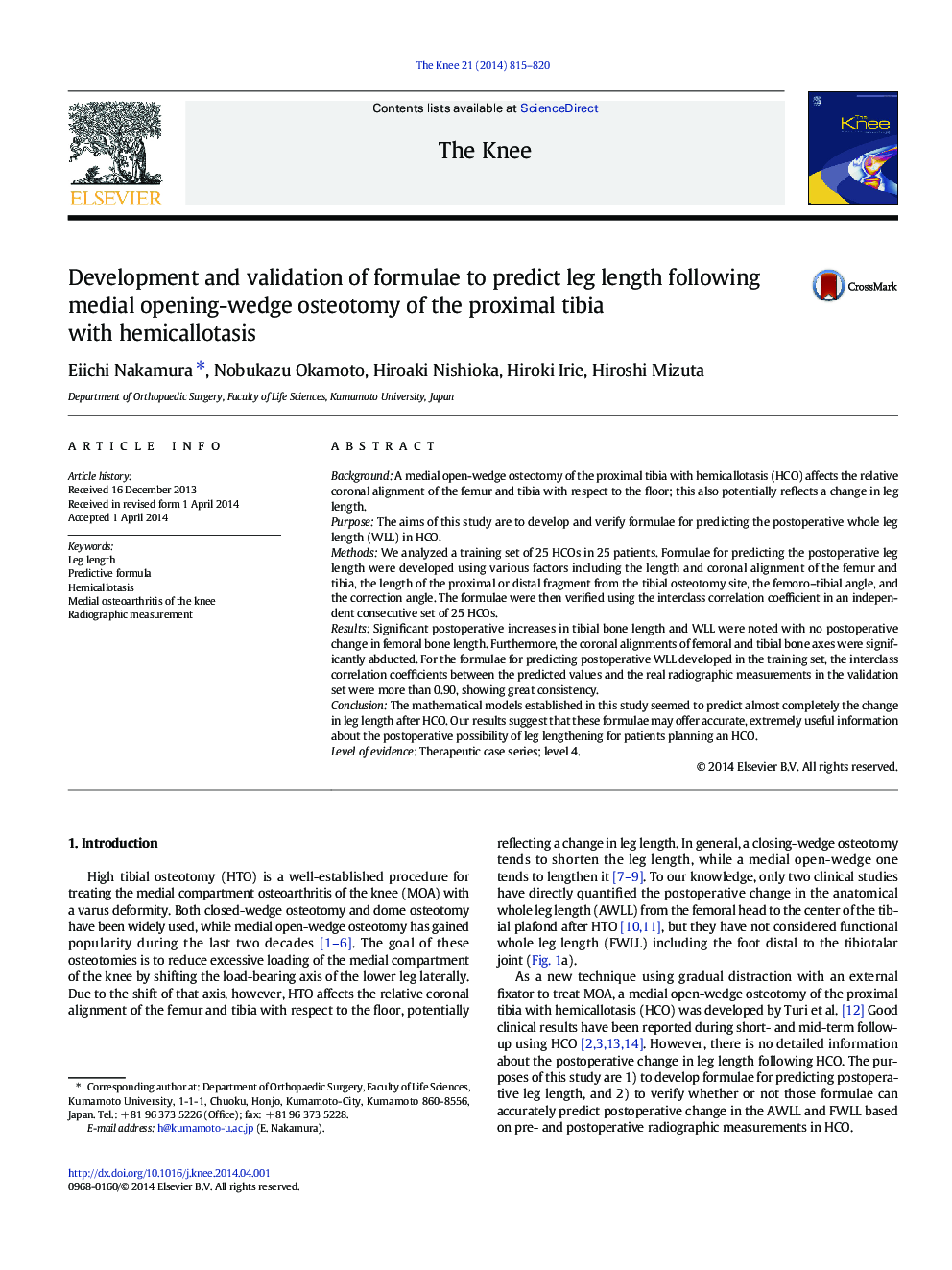| Article ID | Journal | Published Year | Pages | File Type |
|---|---|---|---|---|
| 4077429 | The Knee | 2014 | 6 Pages |
BackgroundA medial open-wedge osteotomy of the proximal tibia with hemicallotasis (HCO) affects the relative coronal alignment of the femur and tibia with respect to the floor; this also potentially reflects a change in leg length.PurposeThe aims of this study are to develop and verify formulae for predicting the postoperative whole leg length (WLL) in HCO.MethodsWe analyzed a training set of 25 HCOs in 25 patients. Formulae for predicting the postoperative leg length were developed using various factors including the length and coronal alignment of the femur and tibia, the length of the proximal or distal fragment from the tibial osteotomy site, the femoro–tibial angle, and the correction angle. The formulae were then verified using the interclass correlation coefficient in an independent consecutive set of 25 HCOs.ResultsSignificant postoperative increases in tibial bone length and WLL were noted with no postoperative change in femoral bone length. Furthermore, the coronal alignments of femoral and tibial bone axes were significantly abducted. For the formulae for predicting postoperative WLL developed in the training set, the interclass correlation coefficients between the predicted values and the real radiographic measurements in the validation set were more than 0.90, showing great consistency.ConclusionThe mathematical models established in this study seemed to predict almost completely the change in leg length after HCO. Our results suggest that these formulae may offer accurate, extremely useful information about the postoperative possibility of leg lengthening for patients planning an HCO.Level of evidenceTherapeutic case series; level 4.
